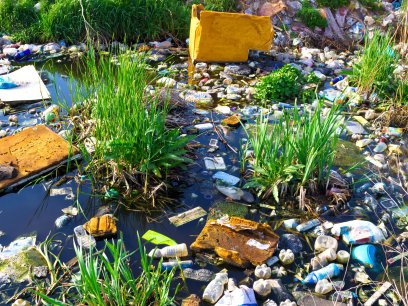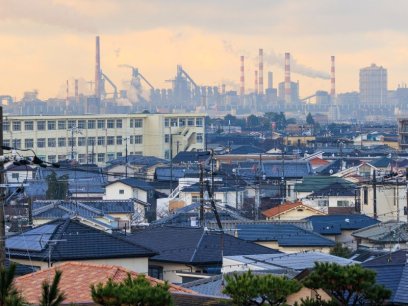
In 2012, 3.2 million American farmers operated 2.1 million acres of farmland that produced food, fuel, and fiber for people in the US and around the world. Though farming tends to dominate rural areas, city and suburban farming has taken hold of backyards, rooftops, balconies, vacant lots and parks, roadsides, and other open spaces â around 15% of the world's food is now grown in urban areas. Though farming is essential for people around the world, farming operations can degrade water quality when not properly managed.
Nitrogen- and phosphorus-rich fertilizers and animal manure are the primary sources of nutrient pollution from agriculture. Excess nutrients can degrade water quality when it rains, or when water and soil containing nutrients wash into nearby water bodies or leak into groundwater. These nutrients can spur the overgrowth of algae in water (called algal blooms). Algal blooms produce dangerous toxins that can sicken or kill people and animals, create oxygen-poor waters that threaten aquatic life, increase treatment costs for drinking water, and impair industries dependent on clean water. Furthermore, fertilized soils and livestock can be major sources of nitrogen gases, like ammonia and nitrogen oxides. Ammonia can harm aquatic organisms if large amounts settle in surface waters, while nitrous oxide is a greenhouse gas contributing to climate change â click here to learn how climate change impacts water quantity and quality.
Here's a list from US EPA of ways to improve farming operations to reduce nutrient pollution:
- Nutrient management: Apply fertilizers in the correct amount, at the proper time of year, and by following product directions.
- Cover crops: Plant specific grasses, grains, or clovers that help keep nutrients out of the water by recycling them and decreasing soil erosion.
- Plant buffers: Plant trees, shrubs, and grass around fields, especially those that border water bodies, to help by removing or filtering out nutrients before they reach a water body.
- Conservation tillage: Reduce tilling to prevent erosion and soil compaction, build soil organic matter, and decrease runoff.
- Manage livestock waste: Keep animals and their waste out of water bodies to prevent nutrients from being discharged and to restore stream banks.
- Drainage water management: Reduce nutrient loadings that drain from agricultural fields to prevent the degradation of streams, rivers and lakes.
- Watershed efforts: The collaboration of a variety of people and organizations often across an entire watershed is essential to combating nutrient pollution. Consider engaging with your local government, farm organization, conservation group, educational institution, non-profit organization, and community group to help improve water quality. Learn more about water quality conservation efforts by earning the Watershed Sleuth Badges.
Sources
- NOAA National Ocean Service. 2016. “What is a Dead Zone?” Accessed July 14. http://oceanservice.noaa.gov/facts/deadzone.html.
- United States Department of Agriculture. 2015. “Farm Demographics - U.S. Farmers by Gender, Age, Race, Ethnicity, and More.” Accessed July 14, 2016. https://www.agcensus.usda.gov/Publications/2012/Online_Resources/Highlights/Farm_Demographics/#how_many.
- US EPA. 2016. “Harmful Algal Blooms.” Accessed July 14. https://www.epa.gov/nutrientpollution/harmful-algal-blooms#cause.
- US EPA. 2016. “The Sources and Solutions: Agriculture.” Accessed July 14. https://www.epa.gov/nutrientpollution/sources-and-solutions-agriculture.
- US EPA. 2016. “Urban Agriculture Frequent Questions.” Accessed July 14. https://www.epa.gov/brownfields/urban-agriculture-frequent-questions.


